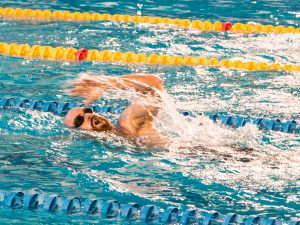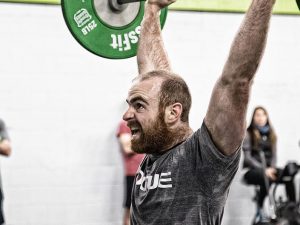
I get a lot of questions about my program and about what a yearly training cycle looks like. So this post will provide some insight into what I’m doing right now: enjoying the off-season.
The 2015 CrossFit Games reached its explosive conclusion at the end of July. It was a jam-packed season from the start of the Open, through Regionals, and into the finals. Every year, the bar gets raised. Every year, the level of competition reaches a more feverish pitch.
And every year, I am shocked at what I see on social media after the Games: “2016 starts NOW!”
“Well, had a great couple days of rest, now time to start training!”
“back to the grind!”
This gets posted by rookies and veterans alike, to the enjoyment and approval of the online masses. Well, let me show you the less exciting side of things.
I usually take a month off after the Games.
Let’s clarify exactly what that means. I’m not doing “fun training.” I’m not doing a strength program. I’m not jumping into regular classes at the gym. I am taking the month off.
Here’s the ideal structure of that time, immediately post-games:
Week 1 – do literally (figuratively) nothing. Eat, sleep, bathe occasionally.
Week 2 – assess and treat. Take stock of health and structural issues; see doctors, get massages, etc.
week 3 – reintroduce light movement. Swimming, rowing, rehab and isolation drills… This is what most “normal” people do for exercise.
week 4 – transition towards training. Start to try more typical movement patterns like weightlifting and gymnastics. No volume or intensity.
The exact structure of this time is less important than the mindset. The goal for this month is to be totally switched off. I want to soften my focus and let go of all the dials, pulleys, and levers that I’ve been watching like a hawk all year.
I realize that this is drastically different from what some athletes advertise. Surely, there are a range of personalities at the elite level that require different kinds of stimulation, and different protocols, to feel like they are doing the right thing to get to next year. My decision to take a month off is driven by a few factors: physical, mental, and administrative.
Physically, I am wrecked after the Games. Many athletes are, but maybe don’t realize it. I’ve had fairly significant injuries in nearly all of my 5 years training for the Games, and the off-season is so short, the competitive season is such a whirlwind, that the only time I really have to truly stop and deload my body is right after the finals. From this perspective, a month is not very long at all. Most serious strains and pains can take 2-3 months to fully rehab. I need to give myself at least a chance to start these healing processes so that they can continue during training in the off-season. From a health and nutrition standpoint, I also like to give my body a break from the massive calorie and supplement consumption that is necessary in-season. Letting the organs and digestive tract rest is important, and really, a month is not very long for this.
The mental category is a catch-all for social, emotional, interpersonal, and recreational factors. I like to use some time after the Games to act my age… how many 26 year-olds do you know who exercise all day, go to bed early, and avoid sugar and alcohol all year, for little-to-no money or recognition? Some of my best friends from high-school and university still live in my hometown, but I barely ever see them. The family and friends that I do see are spending most of the year watching me withdraw into the focus of my training. I don’t do any fun activities like surfing or skiing because I could end my season in a split-second accident. These are not complaints, but rather conscious sacrifices I have made in pursuit of my goals. However, the spirit can’t thrive on goals alone. So, I like to take some time to stay up late, drink beer, eat junk, and hang out. I feel this release and contrast is necessary, and can help define and feed my focus for the upcoming year.
Administrative factors are basically all the grownup activities that get neglected during the training year. After the Games, I do my best to rebuild habits of answering emails on time, doing chores, making to-do lists, and generally trying to get my life in order (this is still a work in progress, as my girlfriend Lindsay will surely confirm). I use this down-time to reflect on my training and to brainstorm for the year ahead. What details do I need to polish this season? What changes can I make to improve? This is an organic process that lasts all year, but now is the time to take advantage of creativity, with the mind and body being free and relaxed. I also start to lay the groundwork for off-season projects: travel for events and workshops is how I support myself outside of competition. So, stay tuned to my website and social media for all the fun stuff I’m planning – maybe there will be something near you!
At the end of the day, every athlete has different tolerance and needs. I feel that my habit of taking a month off after the Games may be slightly unorthodox, but may be instrumental to my longevity as a CrossFit competitor. As a 5-time Games athlete, having 5 months off in 5 years is actually pretty reasonable. To put things in perspective, Olympic athletes compete every 4 years; theoretically, they could take an entire year off to rest and recover, and then still have 3 whole years to train. The CrossFit season hammers harder and heavier every year, so I try to find breaks where I can, in order to stay afloat and find my time to flourish.




